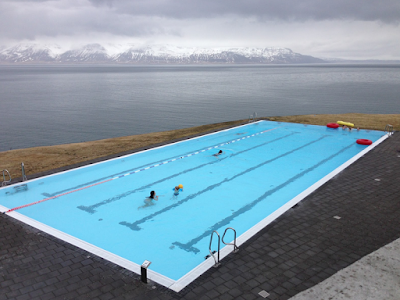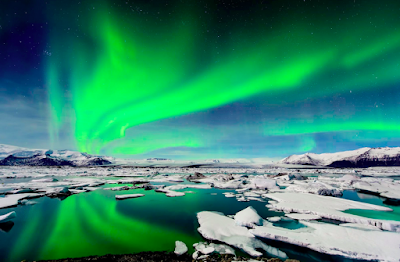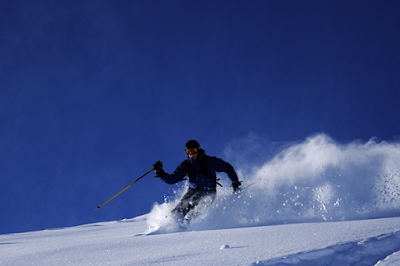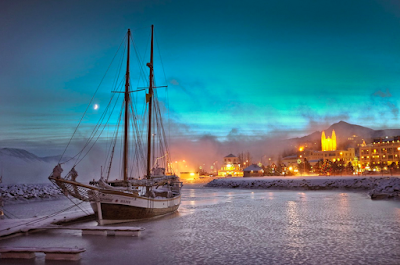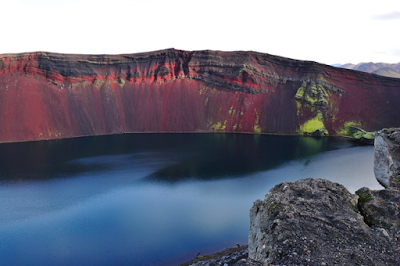In Iceland, winter lasts from September to April, even though the months September and October are considered autumn, and April springtime. In Autumn and Spring, most roads are snow free and accessible, except on the mountains (prepare yourself for all kinds of weather - this is Iceland after all). Temperatures range from 2 to 10 degrees at this time of the year.
In winter, from November to March, snow and ice cover the island, storms are frequent, and there are also some sunny days. The road conditions are difficult especially in the interior of Iceland, and some secondary roads are inaccessible, and so, we recommend you practice patience and prudence! At this time of year, temperatures range from -10 to +2, and if the wind gets involved, it does seem much colder! In the case of problems or difficulties during your trip, remember the emergency number, 112.
Swimming
A visit to the public pool is not necessarily the first activity you'd think of in winter, but in Iceland, it makes a lot of sense. Iceland is full of beautiful natural spas and hot springs. However, public swimming pools are also a unique experience. In Iceland, almost all swimming pools are outside, cold air and hot water combined are an unusual and surprising mix. There's nothing better than to bask in hot water at 40 degrees when it is snowing outside. The pools open all year round from early morning (weekdays 6:30 am) it gives locals a chance to go for a dip before work. If you don't like swimming, don't worry; the Icelandic public pools are also designed for relaxation and socialising!
The northern lights
To view the Northern Lights on a winter's night is a must! To see the aurora borealis, it must be dark, the sky clear and solar activity intense. To find out where the sky is clear you can check out the Icelandic weather report on the website. To see if solar activity is enough to view the Northern Lights, the same site shows forecasts for the coming week, but we recommend you don't rely on these reports for more than a few hours because there can be a sudden weather change. You can get in your car and go Northern Lights hunting at night, or hire the services of a tour agency that will guide you to the right place.
To ski
Iceland has dozens of ski slopes stretching out to all four corners of the country. The best-known slopes for downhill skiing are at Bláfjöll near Reykjavík, Hlíðarfjall in Akureyri North of Iceland. You can also ski in Isafjörður in the west and most of Northern parts of Iceland and the East.
Enjoy the city
Many events take place in the Icelandic capital in wintertime which is especially great for helping one forget about the long dark winter days. Enjoy the many festivals in Reykjavík i.e. Iceland Airwaves, the Dark Music Days, the Reykjavík Winter Lights Festival, the Food and Fun Design March, and so on! Visit museums and spend a lot of time at the cafe, and you'll soon become a real Reykjavíkingur! Egilsstadir is also a festival to celebrate the winter, Days of Darkness, and Akureyri is a lot of events related to skiing and surfing throughout the winter.
... Or the countryside!
Think outside the box, and go to the Icelandic highlands with a guide! Winter is a magical and mysterious season, why not experience it in a place away from the world? Wild and incredible destinations in winter are numerous (should I say everywhere)? Landmannalaugar, for example, is a pearl of the highlands of Iceland, situated in the nature reserve Fjallabak. Located at the extremity of Laugahraun lava field formed during a volcanic eruption in 1477, this place is known for its beautiful scenery and geothermal sources. In summer it is a popular place for tourism but in winter, fewer people go to the highlands (only authorised agencies have the right and the technical means to venture there).
© All rights reserved
